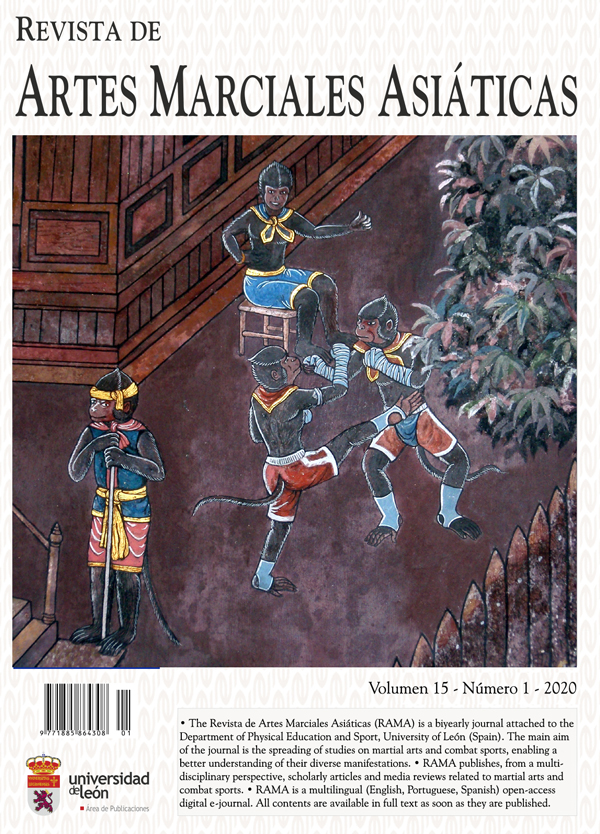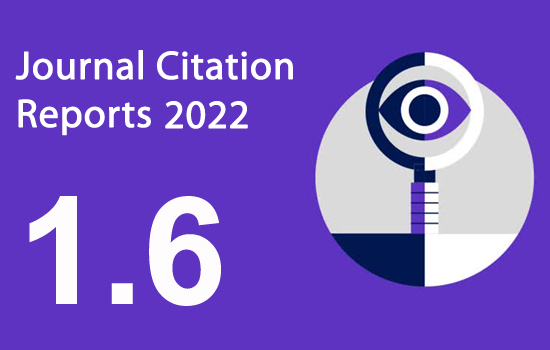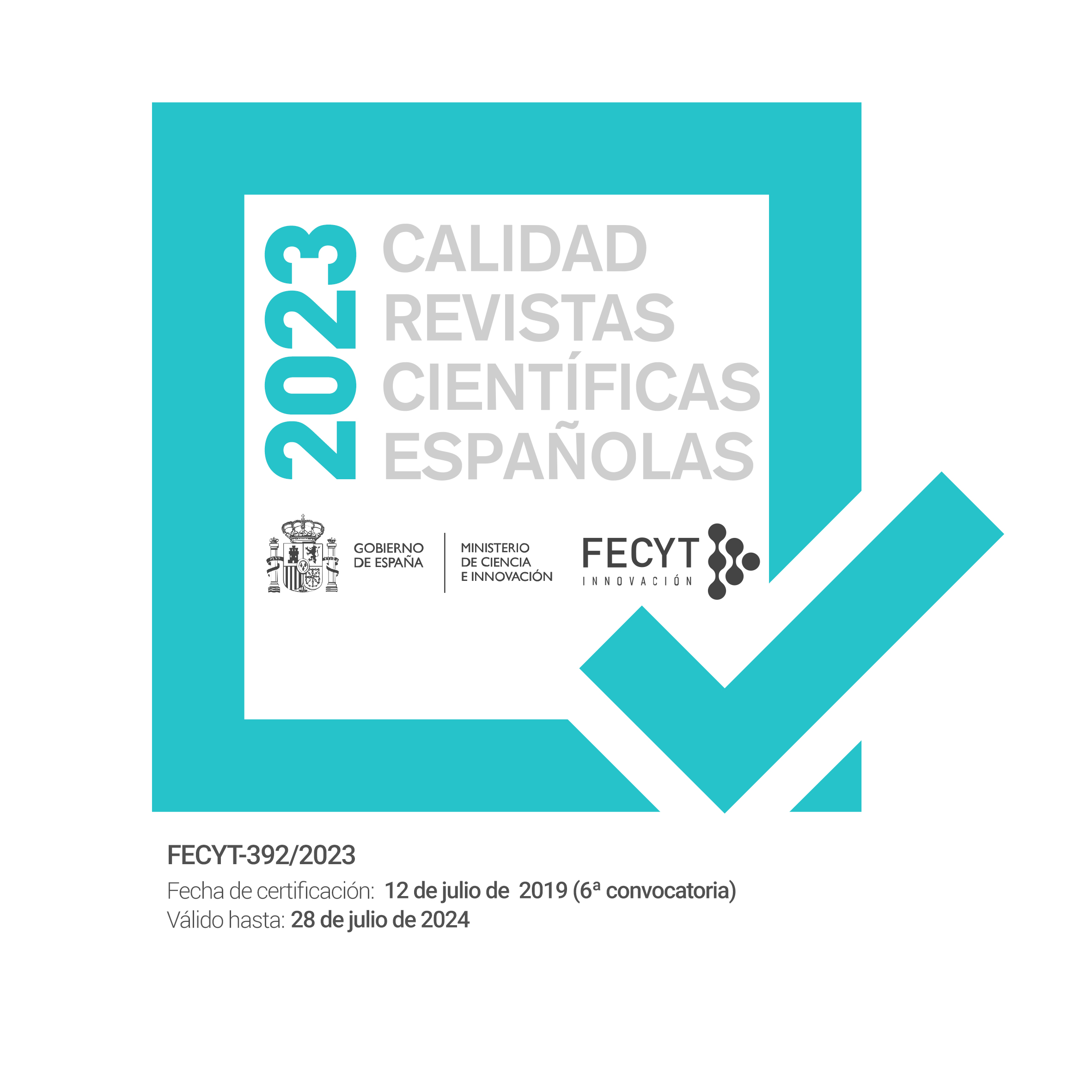Treinamento intervalado de alta intensidade melhora desempenho específico em atletas de taekwondo
DOI:
https://doi.org/10.18002/rama.v15i1.6041Palavras-chave:
Desportos de combate, artes marciais, taekwondo, TIAI, fatiga, desempenho atlético, HIITEntidades:
Source of support, POSTDOC_DICYT, Code, 02164OD, Vicerrectoría de Investigación y Desarrollo, Universidad de Santiago de Chile, USACH, Chile.Resumo
Os métodos de treinamento específicos são um aspecto importante na preparação física dos atletas de taekwondo. O propósito deste estudo foi investigar o efeito de um programa de treinamento intervalado de alta intensidade (TIAI), de curta duração, com técnicas específicas de taekwondo sobre o desempenho anaeróbio. Doze atletas de taekwondo foram alocados aleatoriamente a um grupo controle (n=6) ou a um grupo experimental (n=6). O protocolo experimental consistiu em 3 blocos de 6 séries de esforço com duração de 10 segundos, com recuperação passiva de 10 segundos entre as séries e intervalos de descanso de 1 minuto entre os blocos, realizado 3 dias por semana durante 4 semanas. Foi utilizada a análise de variância (ANOVA) a três fatores (grupo, série e tempo) com medidas repetidas nos dois últimos fatores para comparar o desempenho durante cada série do Frequency Speed Kick Test (FSKT) e uma ANOVA a dois fatores (grupo e tempo) com medidas repetidas foi utilizada para comparar o número total de chutes e o índice de fadiga de chutes (IFC). Os dois grupos mantiveram seu treinamento regular de taekwondo, o qual era exatamente o mesmo. Antes e depois do programa de treinamento os atletas realizaram o FSKT. O grupo experimental aumentou o desempenho (p <0,01) em cada uma das cinco séries do FSKT e no número total de chutes (p <0,001). Não foi observada diferença estatística no grupo controle depois de 4 semanas ou entre o grupo controle e o grupo experimental em nenhum momento. Um programa de TIAI, de curta duração, com técnicas específicas de taekwondo melhorou o desempenho anaeróbio medido por meio do FSKT. Contudo, o IFC não mudouDownloads
Métricas alternativas
Referências
Bridge, C.A., Jones, M.A., & Drust, B. (2011). The activity profile in international Taekwondo competition is modulated by weight category. International Journal of Sports Physiology and Performance, 6(3), 344-357. doi: https://doi.org/10.1123/ijspp.6.3.344
Bridge, C.A., McNaughton, L.R., Close, G.L., & Drust, B. (2013). Taekwondo exercise protocols do not recreate the physiological responses of championship combat. International Journal of Sports Medicine, 34(7), 573-581. doi: https://doi.org/10.1055/s-0032-1327578
Buchheit, M., & Laursen, P. (2013). High-intensity Interval Training, Solutions to the Programming Puzzle: Part I: Cardiopulmonary Emphasis. Sports Medicina, 43(10), 927-54. doi: https://doi.org/10.1007/s40279-013-0066-5
Farzad, B., Gharakhanlou, R., Agha-Alinejad, H., Curby, D.G., Bayati, M., Bahraminejad, M., et al. (2011). Physiological and performance changes from the addition of a sprint interval program to wrestling training. Journal of Strength and Conditioning Research, 25(9), 2392-2399. doi: https://doi.org/10.1519/JSC.0b013e3181fb4a33
Franchini, E., Julio, U.F., Panissa, V.L.G., Lira, F.S., Agostinho, M.F., & Branco, B.H.M. (2016a). Short-term low-volume high-intensity intermittent training improves judo-specific performance. Archives of Budo, 12, 219-229. doi: https://doi.org/10.1016/j.jsams.2017.01.199
Franchini, E., Julio, U.F., Panissa, V.L., Lira, F.S., Gerosa-Neto, J., & Branco, B.H. (2016b). High-intensity intermittent training positively affects aerobic and anaerobic performance in judo athletes independently of exercise mode. Frontiers in Physiology, 28(7), 268. doi: https://doi.org/10.3389/fphys.2016.00268
Franchini, E., Cormack, S., & Takito, M. Y. (2019). Effects of High-Intensity Interval Training on Olympic Combat Sports Athletes' Performance and Physiological Adaptation: A Systematic Review. Journal of Strength and Conditioning Research, 33(1), 242–252. doi: https://doi.org/10.1519/JSC.0000000000002957
Girard, O., Mendez-Villanueva, A., & Bishop, D. (2011). Repeated-sprint ability - part I: Factors contributing to fatigue. Sports Medicine, 41(8), 673-694. doi: https://doi.org/10.2165/11590550-000000000-00000
Hopkins, W.G. (2016). A new view of statistics: A scale of magnitude for effect statistics. Retrieved July 5, 2017 from http://www.sportsci.org/resource/stats
Kamandulis, S., Bruzas, V., Mockus, P., Snieckus, A., & Venckunas, T. (2018). Sport-specific repeated sprint training improves punching ability and upper-body aerobic power in experienced amateur boxers. Journal of Strength and Conditioning Research, 32(5), 1214–1221. doi: https://doi.org/10.1519/JSC.0000000000002056
Kim, J., Lee, N., Trilk, J., Kim, E.J., Kim, S.Y., Lee, M., et al. (2011). Effects of sprint interval training on elite judoists. International Journal of Sports Medicine, 32(12), 929-934. doi: https://doi.org/10.1055/s-0031-1283183
Lopes-Silva, J.P., Ferreira da Silva Santos, J., Abbiss, C., Franchini, E. (2019). Measurement Properties and Feasibility of Repeated Sprint Ability Test: A Systematic Review. Strength & Conditioning Journal, 41(6), 41-61. doi: https://doi.org/10.1519/SSC.0000000000000495
Monks, L., Seo, M.W., Kim, H.B., Jung, H.C., & Song, J.K. (2017). High-intensity interval training and athletic performance in taekwondo athletes. The Journal of Sports Medicine and Physical Fitness, 57(10), 1252-1260. doi: https://doi.org/10.23736/S0022-4707.17.06853-0
Ravier, G., Dugué, B., Grappe, F., & Rouillon, J.D. (2009). Impressive anaerobic adaptations in elite karate athletes due to few intensive intermittent sessions added to regular karate training. Scandinavian Journal of Medicine & Science in Sports, 19(5), 687-694. doi: https://doi.org/10.1111/j.1600-0838.2008.00807.x
Reilly, T., Morris, T., & Whyte, G. (2009). The specificity of training prescription and physiological assessment: a review. Journal of sports sciences, 27(6), 575–589. doi: https://doi.org/10.1080/02640410902729741
Sadowski, J., Gierczuk, D., Miller, J., & Cieśliński, I. (2012). Success factors in elite WTF taekwondo competitors. Archives of Budo, 8(3), 141-146.
Santos, J.F.S., & Franchini, E. (2018). Frequency speed of kick test performance comparison between female taekwondo athletes. Journal of Strength and Conditioning Research, 32(10), 2934-2938. doi: https://doi.org/10.1519/JSC.0000000000002552
Santos, J.F.S., & Franchini, E. (2016). Is frequency speed of kick test responsive to training? A study with taekwondo athletes. Sport Sciences for Health, 12(3), 377-382. doi: https://doi.org/10.1007/s11332-016-0300-2
Santos, J.F.S., Herrera-Valenzuela, T.H., & Franchini, E. (2015). Can different conditioning activities and rest intervals affect the acute performance of taekwondo turning kick? Journal of Strength and Conditioning Research, 29(6), 1640-1647. doi: https://doi.org/10.1519/JSC.0000000000000808
Santos, J.F.S., Herrera-Valenzuela, T., Mota, G.R., & Franchini, E. (2016). Influence of half-squat intensity and volume on the subsequent countermovement jump and frequency speed of kick test performance taekwondo athletes. Kinesiology, 48(1), 95-102. doi: https://doi.org/10.26582/k.48.1.6
Santos, J.F.S., Loturco, I., & Franchini, E. (2018). Relationship between frequency speed of kick test performance, optimal load, and anthropometric variables in black-belt taekwondo athletes. Ido Movement for Culture. Journal of Martial Arts Anthropology, 18(1), 39-44. doi: https://doi.org/10.14589/ido.18.1.6
Zagatto, A. M., Beck, W. R., & Gobatto, C. A. (2009). Validity of the running anaerobic sprint test for assessing anaerobic power and predicting short-distance performances. Journal of Strength and Conditioning Research, 23(6), 1820–1827. doi: https://doi.org/10.1519/JSC.0b013e3181b3df32
Downloads
Publicado
Como Citar
Edição
Secção
Licença
Direitos de Autor (c) 2020 Diego Enrique Aravena Tapia, Valeria Román Barrera, Jonatas Ferreira Da Silva Santos, Emerson Franchini, Pablo Valdés-Badilla, Pedro Orihuela, Tomás Herrera-Valenzuela

Este trabalho encontra-se publicado com a Licença Internacional Creative Commons Atribuição-NãoComercial-CompartilhaIgual 4.0.
Os autores que publicam nesta Revista estão de acordo com os seguintes termos:
- Os autores cedem, de forma exclusiva, os direitos de exploração (reprodução, distribuição, comunicação pública, transformação) à Universidade de Léon, podendo estabelecer, em separado, acordos adicionais para a distribuição não exclusiva da versão do artigo publicado na Revista (por exemplo: alojar no repertório institucional ou publicá-lo num livro), com o reconhecimento da publicação inicial nesta Revista.
- O trabalho encontra-se na Creative Commons Attribution-Non Commercial-Share Alike 4.0 International License. Pode-se consultar aqui o resumo e o texto legal da licença.
- Permite-se, e sugere-se, que os autores difundam electronicamente as versões pré-impressão (versão antes de ser avaliada) e pós-impressão (versão avaliada e aceite para publicação das suas obras antes da sua publicação), favorecendo a sua circulação e difusão, e com ela o possível aumento da sua citação e alcance pela comunidade académica.











